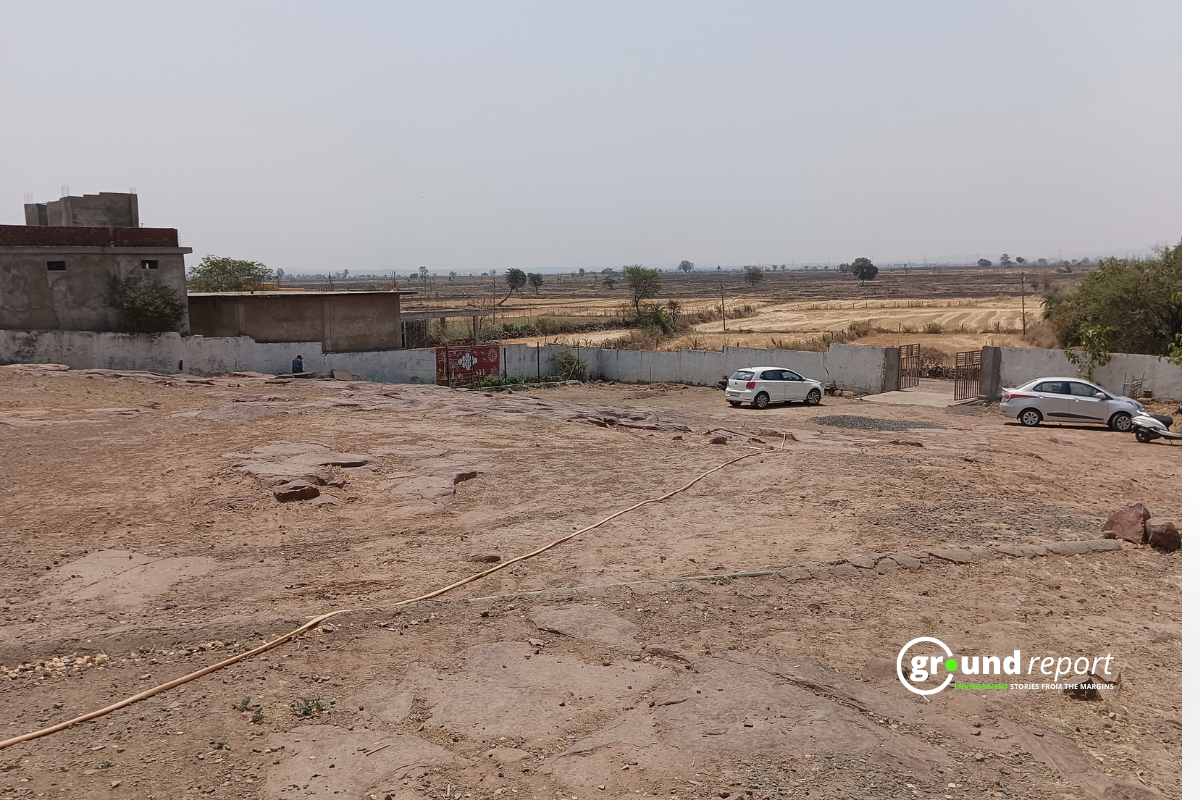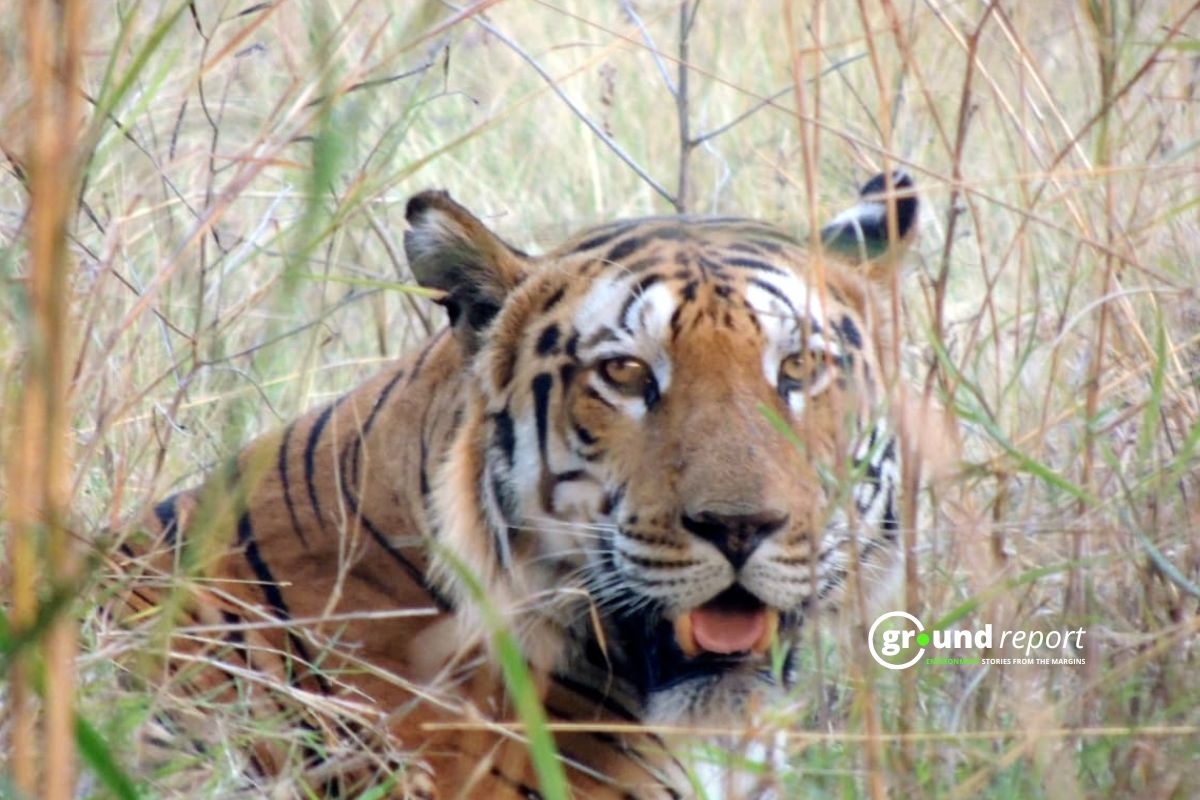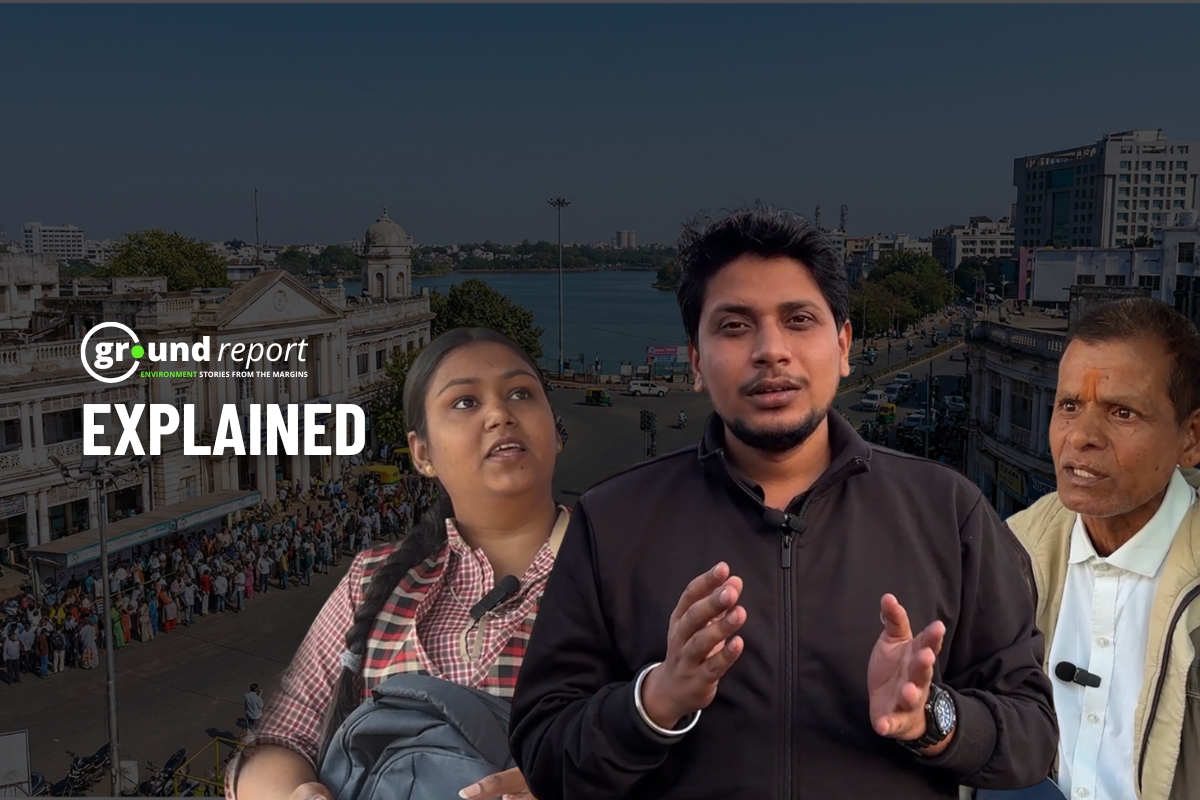In the cold winters Ladakh, a remote region, finds itself isolated from the rest of India due to heavy snowfall. Yet, when summer arrives, it transforms into a haven for adventurous travellers. However, life for the local communities is far from easy in this cold terrain. Their sole water source comes from the glaciers, which melt during the warmer months, sustaining them year-round.
Amidst these challenges, hope grew in the form of Chewang Norphel and his innovative idea to craft artificial glaciers. Norphel lauded as the “Ice Man of India,” recognized the impacts of global warming as early as 1966. Growing up in Ladakh, he witnessed firsthand the water scarcity plaguing his village and neighbouring areas. His proactive approach led him to become a solution provider, contributing significantly to the region’s infrastructure development.
Norphel’s method involves diverting glacier water to shaded mountain areas, where it freezes into artificial glaciers. By strategically positioning iron pipes, the water gradually freezes, forming man-made glaciers. This innovative technique has revolutionized agriculture in Ladakh, bridging the gap in water availability and reducing the need for rural-to-urban migration.
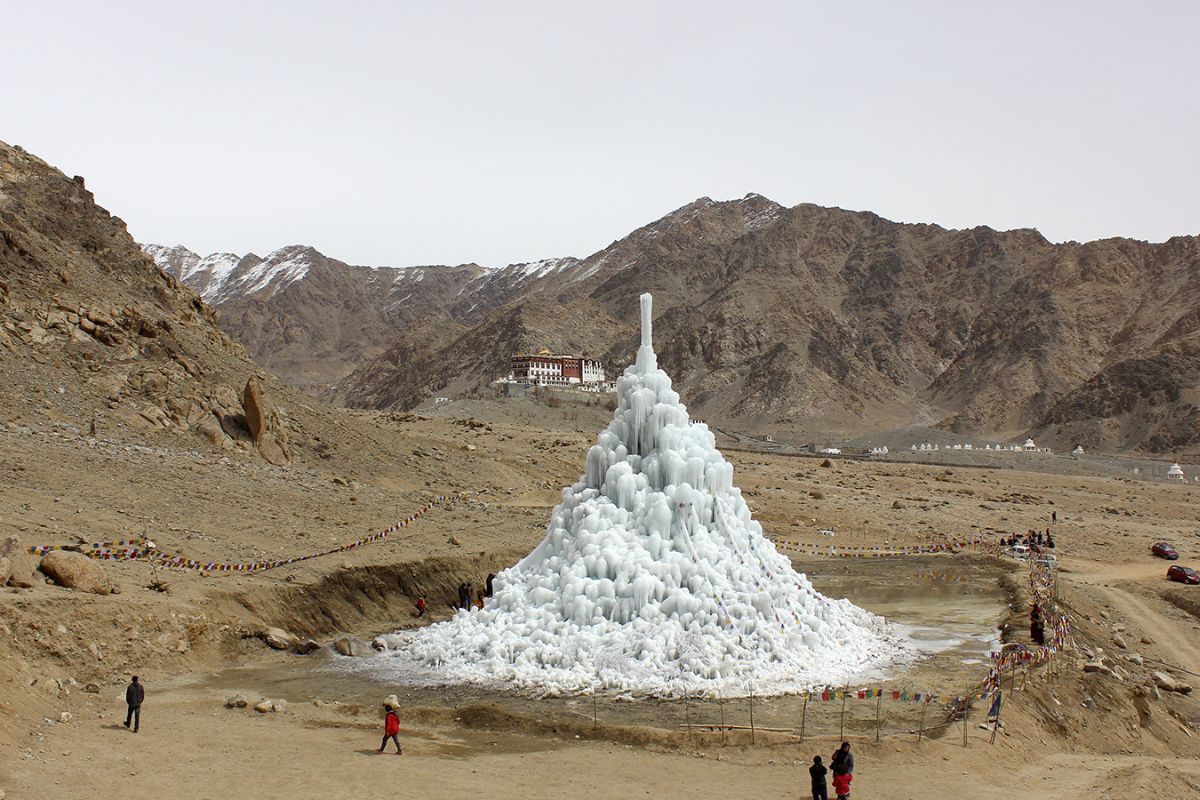
Having built 15 artificial glaciers, Norphel’s innovative work has earned him international recognition. Despite Ladakh’s meagre annual rainfall of 50 mm, his innovative technology ensures water supply for the region. Through large basins built in late autumn, Norphel diverts meltwater from high-altitude glaciers, replenishing the land below and irrigating over 200 hectares of crops by late winter.
A civil engineer by profession, Norphel’s journey toward rural development began after his academic pursuits in science and engineering. His contributions were honoured with the prestigious Padma Shri award in 2015. Documentaries featuring his work, titled ‘Iceman of India,’ are available on platforms like Netflix and Amazon Prime, further amplifying his impact.
Ground Report had the opportunity to speak with Chewang Norphel, also known as the “Ice Man of India,” about his innovative solution to water scarcity in Ladakh. Growing up in Ladakh, Norphel witnessed firsthand the challenges faced by communities due to water scarcity caused by melting glaciers. In response, he developed a simple yet ingenious method of creating artificial glaciers.
Q: You worked extensively on glaciers and artificial glaciers back in the 1990s. Could you tell us more about that?
A: At that time I had to cover the entire district. In this capacity, I did a lot for the village. Like we built a pool. Connectivity has been improved. There was a village when I reached there there was a problem with water. There was not even a glacier above. So I thought that I should do it for them again. After thinking a lot, I thought that we should make artificial glaciers. Money for this was not available quickly. But then I thought let’s do a little trial, if it is successful then it would be great. But by the grace of God, it became successful. It had a huge contribution in water conservation.
Q: Where did you create the first artificial glacier and how is the process different from natural glaciers?
A: I made the first artificial glacier in 1987. The main technique involves reducing the velocity of the glacial water flow. To do this, we increase the water’s volume by dividing it into smaller streams as it comes down from above. This reduces the velocity. It is a little different from natural glacier. This is natural, it will remain natural. Like natural glacier is formed at a height of 6-7 thousand feet. Where the temperature is much lower than normal places. Glaciers are formed naturally there. But when we create them near people and settlements, there is a slight difference. In artificial glaciers like the one I have created, the velocity of water is reduced so that the ice melts quickly and turns into water and people can use it.
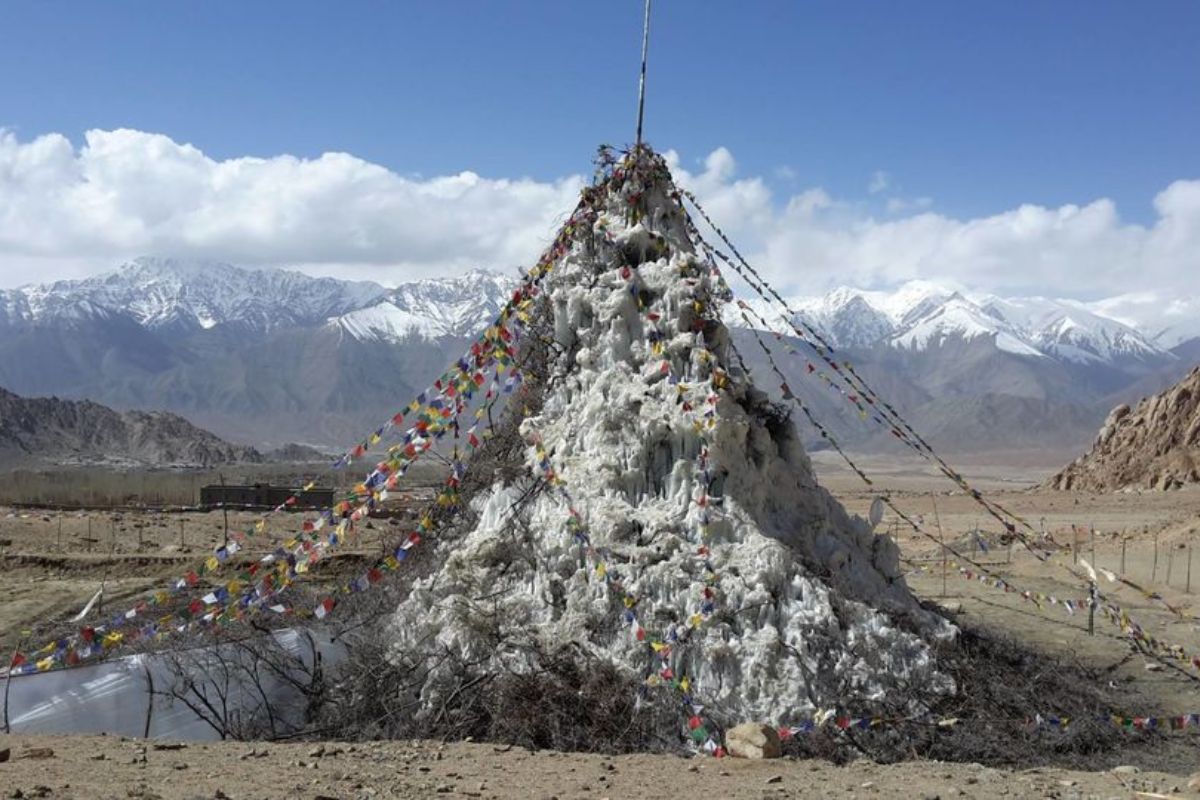
Q: What were the biggest challenges in making the first artificial glaciers?
A: The biggest problem we faced in making artificial glacier was connectivity and funds. The technique was not right. It took a lot of hard work. Many times the entire work came to a halt due to a small task.
GR: How do these artificial glaciers impact the environment?
A: Where we make artificial glaciers. Where these occur, changes begin to occur. Grass starts growing more. The more green the area is, the better the environment will be.
Q: Natural glaciers are melting rapidly, are artificial glaciers also melting rapidly? What was people’s reaction when you made it for the first time?
A: Yes, it is true that glaciers are melting faster. Obviously artificial glaciers are also melting. When we made an artificial glacier for the first time, even we ourselves could not believe it. Got the best response from farmers and people. Because they all were struggling with water shortage. But there is a lot of difference between then and now. People don’t want to work hard anymore.
Q: As tourist numbers increase with people coming to see and photograph the glaciers, how do you manage sustainability?
A: If we pay attention to the structure properly then we will not need to work so hard for the next 10-15 years. If we pay proper attention to its design then it will be very beneficial. Now new shops and dhabas have opened and the crowd is increasing. This will only increase the difficulties.
GR: How replicable is this idea in other parts of the world facing similar water crises?
A: Absolutely. In fact, people have already come from places like Kyrgyzstan facing the same issues to learn the artificial glacier technology from me after extended discussions. I’m confident it can and will be implemented in other water-stressed regions as well.
Q: How can the design of artificial glaciers be improved for better tourism appeal?
A: Let’s make this design properly. Some people along with you said that to showcase tourism, there will be some development. For the show, we need to know how it should be done, which side it should be on and how much can be done. We should focus on that side.
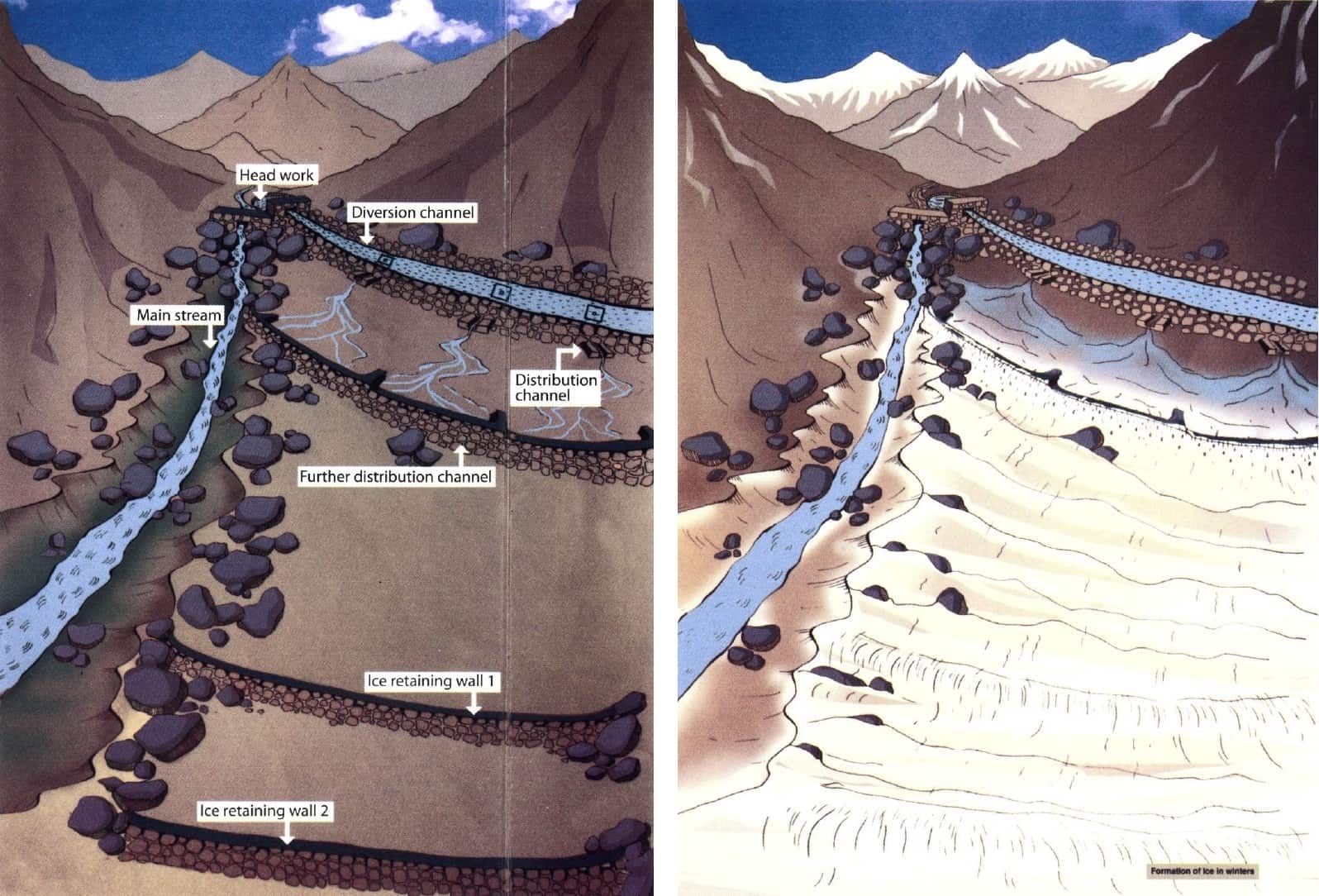
Q: Do you have any plans to create artificial glaciers in other regions?
A: Yes, of course. Everyone knows that the water level is increasing every year, it’s happening everywhere. So the plan is to extend the glaciers to other parts. Recently, such people also came here, we are facing the same issues, so we had a little discussion with them. They also want to create glaciers.
GR: Can you explain how the design for artificial glaciers is developed and its potential impact on tourism?
A: If the design is made properly, it can enhance tourism. We need to consider factors like location, size, and accessibility. There are discussions about showcasing tourism spots and nearby areas. The design should focus on maximizing effectiveness while being visually appealing.
Q: Could you elaborate on the process of creating artificial glaciers and how it addresses water scarcity?
A: We divert glacier water to shaded areas and use iron pipes to freeze it. This creates artificial glaciers that melt slowly, providing water for agriculture and other purposes. It helps address water scarcity by bringing water closer to villages, reducing reliance on natural glaciers.
Q: How do you maintain the size and shape of artificial glaciers, considering natural glaciers have a triangular shape?
A: When we talk about glaciers, how do we take care of its size and shape? Because the shape of a natural glacier is exactly like a triangle. In the proper shape, how do we take care of the shape of these artificial glaciers? It depends on us at this site. You see here, this is what I follow the team from. Let’s say its cross is white, at least 150 feet is white, then we are empty. Simply, we make some of its retrieval in the steam course in this series. We have made it like this, second, we have made it not so much or ward. So what we do is we put it in a shed and then we enter the shed and they make small outlets there. So below we make its income rating in these series. So what they do is that they become a full glacier, just like a private one.
Q: What are the benefits of artificial glaciers in terms of social, economic, and environmental aspects?
A: Artificial glaciers mitigate the effects of climate change and water scarcity. They support agriculture, improve livelihoods, and enhance environmental sustainability. By providing reliable water sources, they contribute to social stability and economic growth in mountainous regions like Ladakh.
Q: How do you ensure the shape and size of artificial glaciers resemble natural ones?
A: We carefully design the structure to mimic natural glacier formations. The shape is maintained by controlling water flow and positioning the infrastructure. By following specific techniques, we create artificial glaciers that resemble natural ones in shape and size.
Q: Can you discuss the challenges faced during the construction of artificial glaciers and the measures taken to overcome them?
A: Funding and technical expertise are major challenges. We collaborate with government agencies and NGOs to secure resources and expertise. Additionally, community involvement and support are crucial for successful implementation.
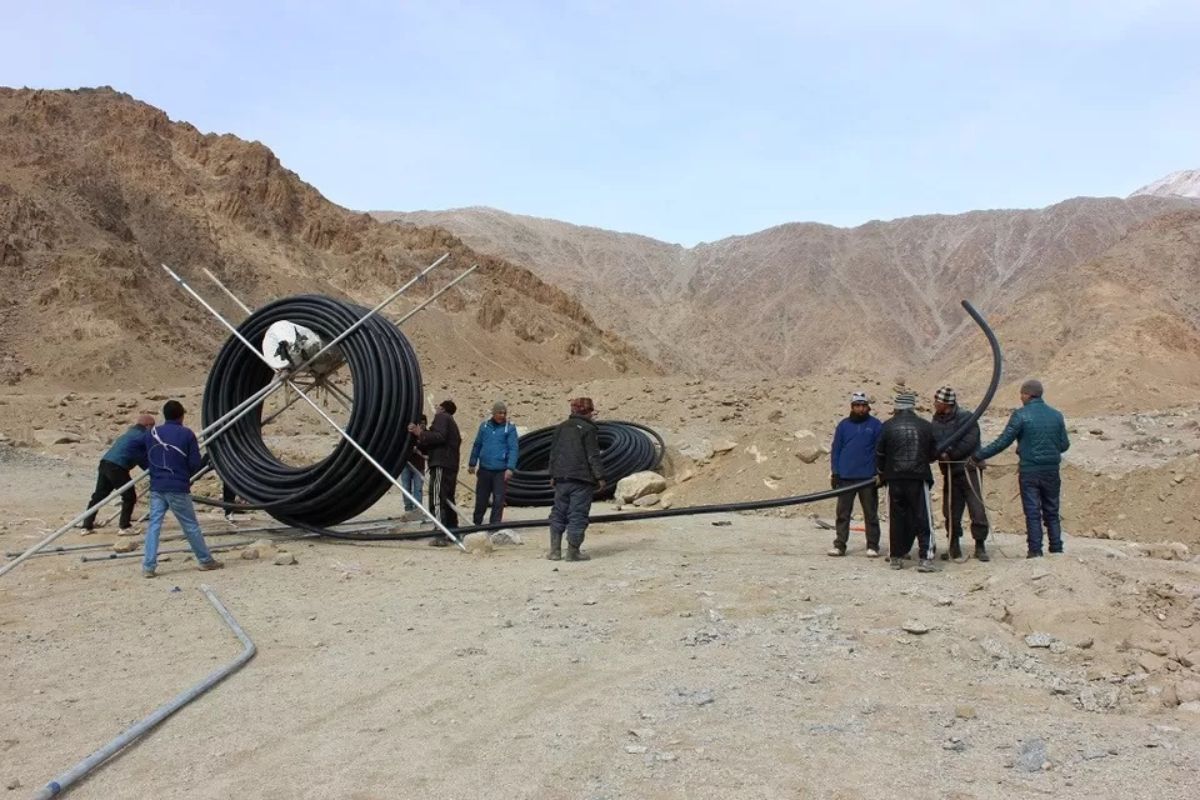
Q: How many artificial glaciers have been constructed in Ladakh, and what is their significance for the region?
A: Currently, there are 23 artificial glaciers in Ladakh, with more under construction. They play a vital role in ensuring water security and supporting agriculture and livelihoods. The glaciers are essential for the region’s sustainability and resilience to climate change.
Q: With rapid urbanization in Ladakh, do you anticipate any impact on artificial glaciers?
A: Urbanization may affect water resources and glacier management. However, proactive measures can mitigate these impacts, such as sustainable land use planning and community engagement. It’s essential to balance development with environmental conservation to protect artificial glaciers and ensure water security for future generations.
Q: Is there a collaborative effort among organizations involved in artificial glacier construction?
A: Yes, collaboration is essential for sharing knowledge and resources. We encourage cooperation among organizations to optimize efforts and maximize benefits. By working together, we can address water scarcity and climate challenges more effectively.
Keep Reading
Part 1: Cloudburst in Ganderbal’s Padabal village & unfulfilled promises
India braces for intense 2024 monsoon amid recent deadly weather trends
Support us to keep independent environmental journalism alive in India.
Follow Ground Report on X, Instagram and Facebook for environmental and underreported stories from the margins. Give us feedback on our email id greport2018@gmail.com.
Don’t forget to Subscribe to our weekly newsletter, Join our community on WhatsApp, and Follow our YouTube Channel for video stories.


